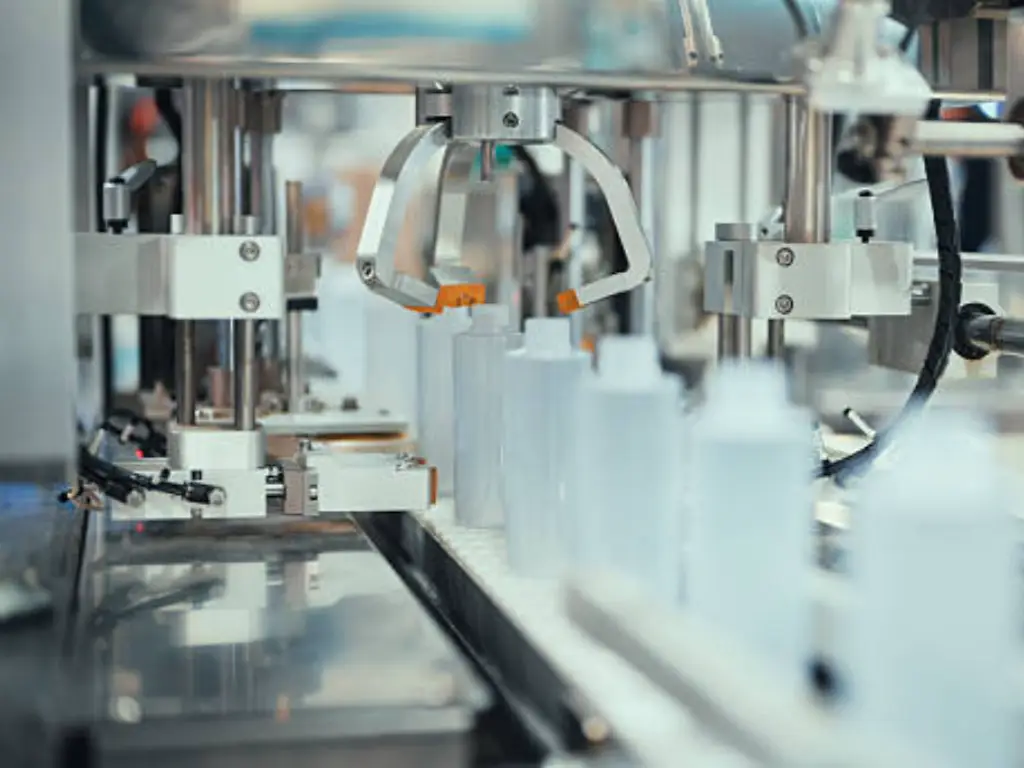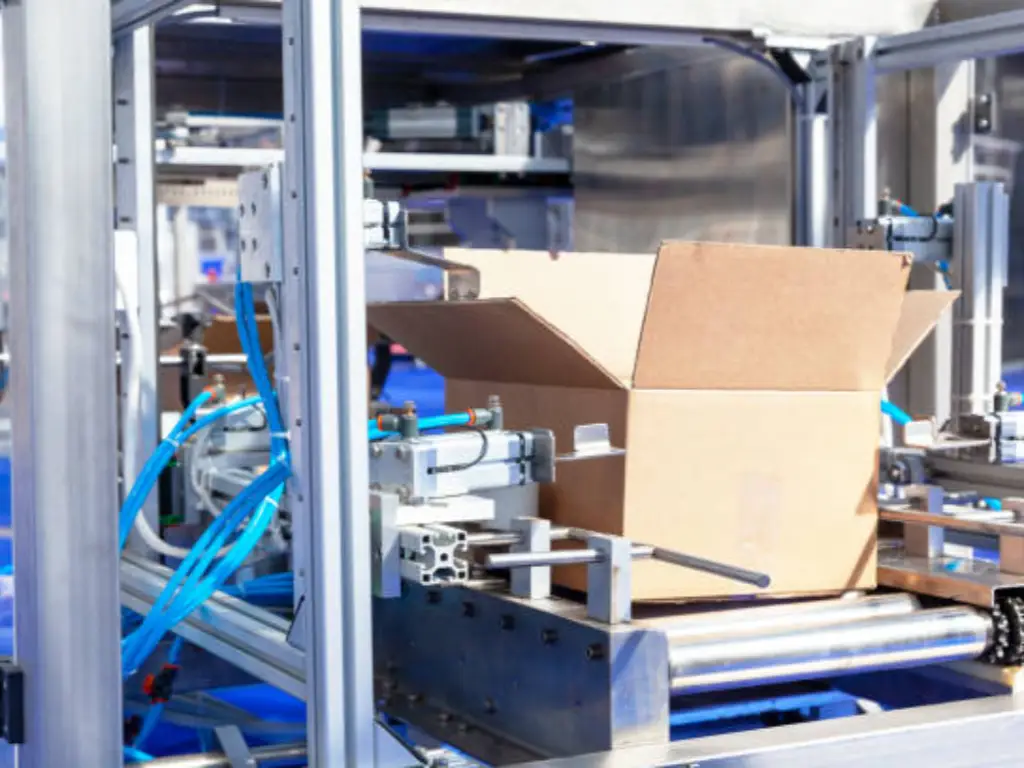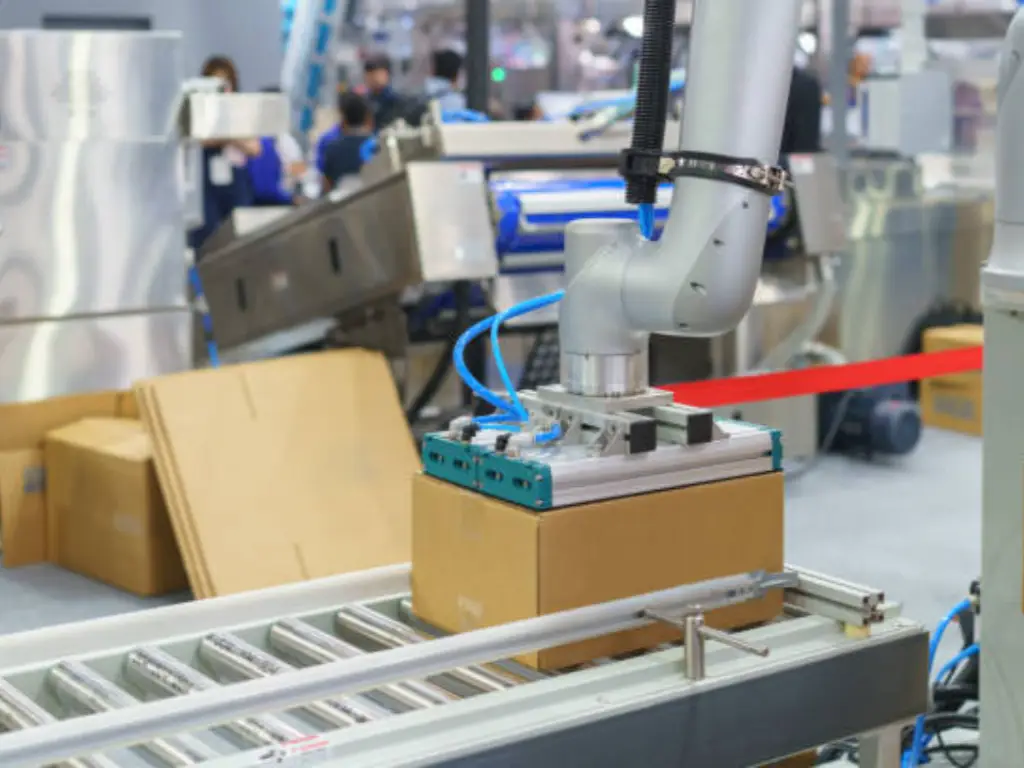Beyond the Box: Why Your Primary Packaging is a Critical Business Asset
In the big and complicated world of production and trade, one can easily lose sight of the obvious. We are concerned with product innovation, supply chain logistics, and marketing strategies, and we forget the very first thing that a customer touches with his hands: the package. It is not a container, but a vital business asset.
A customer experiences the enclosure of a product before they can experience the quality of the product. Does it feel sturdy or flimsy? Is it simple to access or a frustration? Does it safeguard the contents inside, so that the product will be received in the same state that you wanted it to be? The responses to these questions influence perception, determine trust, and shape the entire consumer experience. A cracked seal, a bent corner, or a tattered label can undermine brand identity before the product even has an opportunity to work.
The thing is that primary packaging is much more than a cost center. It is an essential part of the value proposition of your product. It plays an essential role: it ensures safety, conveys essential information, and provides the last, physical aspect of your brand narrative. It is important to know its role, but it is the ability to execute it efficiently and profitably that makes the difference between market leaders and the rest. This guide will not only establish the basics of primary packaging, but will also discuss how the exact power of pneumatic automation can turn this process into a need, rather than a force to cut costs and increase profit.
Defining the Layers: What is Primary Packaging, Really?
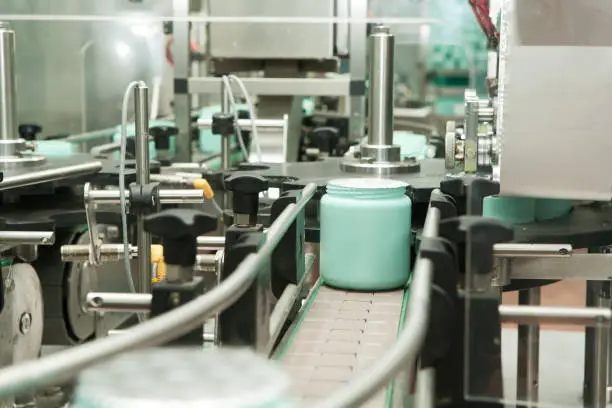
The significance of primary packaging can only be understood by first comprehending its particular place in the greater ecosystem of product transit. Packaging is a system of multiple packaging levels, and each layer of packaging has its intended purpose. Misleading them is an easy error that may result in ineffective design and unwarranted cost. The system is fundamentally organized into three different types of packaging, namely, primary packaging, secondary packaging, and tertiary packaging.
Primary vs. Secondary vs. Tertiary Packaging: A Simple Breakdown
We can demystify these types of packaging by using a simple example that everyone can find in his or her local supermarket: a high-end bottled iced tea.
| Packaging Level | Example | Main Function | Usage Stage | Branding & Information Role |
| Primary Packaging | Glass bottle, metal screw cap, printed label | Directly contacts the product; holds, protects, and preserves it | Consumer purchase and consumption stage | Main medium for branding and product information (e.g., nutrition facts, expiration date) |
| Secondary Packaging | Six-pack cardboard box or carrier | Bundles multiple primary packages for easier handling, display, and restocking | Retail and distribution stage | Provides extra protection and serves as an additional branding platform |
| Tertiary Packaging | Wooden pallet wrapped with plastic stretch film | Groups multiple secondary packages into a single unit for efficient transport and storage | Bulk handling and shipping stage | No direct branding role; mainly ensures safe logistics and transport |
It is important to know this hierarchy. The decisions you make in primary packaging will have a direct impact on your secondary packaging requirements and tertiary solutions. However, it is the first layer of packaging where product protection and brand identity are created.
The 4 Core Functions Your Primary Packaging Must Fulfill
In addition to just holding a product, primary packaging plays a crucial role by fulfilling four functions that cannot be done without and play an important role in its success in the market.
- Protection and Preservation: This is the most basic role. The package should be a fortress, acting as the first line of defense for the safety of the product. It protects the product against potential damage from physical (impacts, vibrations), environmental external factors (moisture, light, temperature), and contaminants (bacteria, dust) effects. In the case of food items, beverages, and pharmaceutical products, this goes to preservation—which is the formation of a barrier against oxygen or moisture to increase shelf life and efficacy against external influences.
- Information and Compliance: Primary packaging is a very important communication channel. It should contain vital information, a lot of which is legally required. This contains the product name, brand identity, weight or volume, ingredient lists, nutritional facts, warning labels, barcodes to manage inventory and expiration dates. The inability to present this information in the right way may lead to legal issues and product recalls.
- Marketing and Brand Appeal: The package is the platform where your product will play in a retail setting. It is a powerful marketing tool that only has seconds to draw the attention of a consumer. The quality of the brand and its identity is reflected in the selection of colors, fonts, packaging materials, and different shapes.
- Convenience and Usability: The way the consumer handles the package is a crucial component of their user experience. Does the bottle have a good grip and pour? Is the food pouch resealable to keep it fresh? Does it have a child-resistant medicine container that offers easy access by seniors? Excellent primary packaging is designed for ease of use and is packaged in a way that the end-user can easily purchase the product, not only that, but also easily use it.
To sum up, successful primary packaging is not merely a container of a product, but the basis of product success. By securing and maintaining the contents, conveying the necessary information in accordance with the regulations, appealing to the consumers with the help of good branding and design, providing convenience and usability, primary packaging performs four functions that cannot be neglected and that determine the way consumers perceive and interact with a product. When these components are in perfect harmony, the packaging does not only protect the contents but also builds brand loyalty, improves the user experience, and eventually leads to success in the market.
A Look Inside: Common Materials and Industry Applications
The choice of primary packaging material is a very important decision that involves a trade-off between cost, performance, and brand perception, depending on the type of product. Different packaging materials have their own set of properties and are therefore applicable in various applications in various industries.
| Material Type | Key Characteristics & Advantages | Disadvantages | Industry Examples |
| Glass | Non-porous, preserves taste and aroma; 100% recyclable, premium feel | Heavy, increases shipping costs; brittle and prone to breakage | Beverage (beer, wine), Food (jams, pickles), Cosmetics (creams), Pharmaceuticals (vials) |
| Plastics (PET, HDPE, etc.) | Lightweight, durable, versatile; low cost, shatter-resistant | Environmental concerns over plastic waste; need for biodegradable options | Food (squeeze bottles, snack bags), Personal Care (shampoo bottles), Pharmaceuticals (blister packs) |
| Metal (Aluminum, Steel) | Excellent barrier to light, water, oxygen; highly recyclable | Heavier, may react with acidic foods if uncoated | Beverage (soda cans), Food (canned vegetables), Aerosols (deodorant) |
| Paper & Paperboard | Sustainable, lightweight, cost-effective, good for printing | Limited moisture/gas barrier unless coated | Dry Food (cereal boxes), Electronics (phone boxes), Fast Food (wrappers, cartons) |
Material choice is even more strict in highly regulated industries such as the pharmaceutical industry. Medical devices or drugs primary pharmaceutical packaging should comply with standards such as the International Pharmacopoeia or UNI EN ISO standards to prevent any leaching or contamination. Hazardous materials also need special packaging solutions to be handled safely. Likewise, pneumatic elements like cylinders and FRL units are essential in such settings. Their contribution to the clean, accurate, and contamination-free operations guarantees the integrity of the manufacturing process and adherence to the regulatory requirements. Moreover, these products should be constructed in such a way that they do not pose any threat of contamination with particles and hence their quality and reliability is critical to the pharmaceutical industry.
The Journey of a Package: A Step-by-Step Overview of the Process
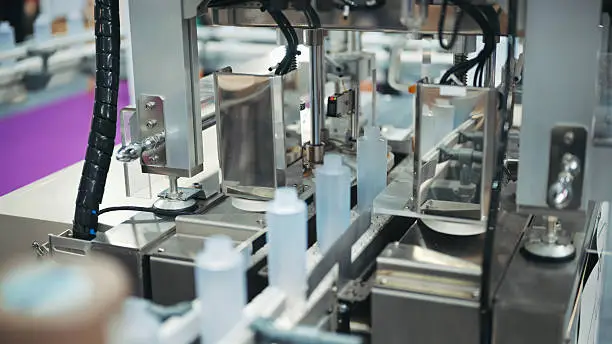
The production of a finished product’s completed primary package is a complicated procedure that entails a series of accurate, high-speed mechanical tasks. Although the details depend on the product, the basic process (part of the overall packaging processes) usually has a series of fundamental steps. It is in this process of raw material to finish well that the chances of efficiency or inefficiency lie.
Forming
This is the first step in the packaging process where the empty container is shaped to contain the product. In blow molding, the plastic is heated and inflated into a bottle-shaped form, whereas in other applications, containers can be formed by other methods such as thermoforming or injection molding. An example is the use of a plastic sheet to make a plastic tray of cookies by heating the sheet until it becomes soft and then putting it in a mold to shape it into the required shape. This stage is important because it makes sure that the container is of the same shape, size and structure and is strong enough to safeguard the product. The aim is to come up with a dependable ship that will preserve the product throughout the handling, transportation, and storage.
The forming process can be different depending on the material. In the case of rigid containers, such as glass or plastic bottles, forming may require complicated equipment that shapes the containers to fit specifications exactly. In the case of flexible packaging, such as bags or pouches, forming may include folding, sealing, and occasionally laminating materials. Whichever the process, uniformity in thickness, size, and durability is essential to make sure that the container does not fail to do its intended job. A properly designed container not only makes it functional but also easy to automate the next steps in the packaging line.
Filling
After the container is made, it is moved to the filling station where the product is loaded into the package. It is a sensitive process and it involves accurate measurements to make sure that every package gets the right quantity of the product. It is also important that the same amount of item is filled in each container regardless of whether it is liquid, powder or solid as this can lead to wastage or underfilling, which can be very problematic. In the case of liquid products, pumps and other special machinery are frequently employed to provide accuracy, whereas powder products can be fed by augers or vibratory feeders.
Besides accuracy, hygiene is another important consideration in the filling process particularly in food and pharmaceutical products. The systems are usually made to be completely enclosed or automated to prevent contamination during filling. This is especially significant in those industries where sterilization or cleanliness is needed. An example is that a sterile filling line is required to fill products such as vaccines or infant formula, where any contamination can cause product failure or safety concerns. Essentially, the filling process should be speedy and accurate so that the containers are filled properly and in a consistent manner to preserve the quality of the products.
Sealing
The second important process in the packaging process is sealing, which involves ensuring that the product contained in the container is well sealed and not exposed to contamination or spoilage. The nature of the product and the packaging design will determine the type of seal to be used. In the case of bottles, this may involve screwing the top tightly on the opening. In the case of trays or boxes, it may include heat-sealing a film lid or folding and gluing the sides. This phase is not only concerned with the integrity of the product, but also with freshness and leakage during transportation and handling.
In addition, the seal is important in product safety and shelf life. Heat seals can be used in food packaging, such as to keep food out of contact with oxygen and moisture, which may cause spoilage. A tamper-evident seal is used in pharmaceutical packaging to make sure that the consumer is aware of whether a product has been tampered with before buying it. Sealing is also used to avoid the possibility of contamination, either by outside influences such as dirt and bacteria, or internal decay caused by exposure to environmental influences. The sealing process is thus important in ensuring the safety and quality of the product in the long run.
Labeling
Labelingis the last stage in the packaging process. This is an essential marketing, product identification and regulatory compliance role. Labels may be as basic as stickers, or as advanced as computerized printed labels. These labels contain vital details like brand names, product description, ingredient list, nutritional details, and any regulatory markings that are required. They also contain such valuable information as lot numbers, manufacturing dates, and expiration dates to assist in tracking the product and controlling inventory.
In other instances, labeling may be very personalized, based on the product and the market. As an example, unique labels can be used on seasonal or limited-edition products to attract consumers. Also, labels should be in accordance with the strict regulatory requirements, particularly of food, beverages, and pharmaceuticals, to provide consumers with the correct and clear information about the products. Accuracy and efficiency are important in this phase because any error or delay in labeling may lead to serious consequences, including recalls or lawsuits. Thus, labeling process is not only about aesthetics, but also about making sure that the product is market-ready and legally compliant.
Conclusion
All these stages pose a mechanical challenge. The operations should be quick, repeatable, and dependable, thousands and thousands of times a day. And here, in the middle of the production line, automation is not only beneficial, but a necessity.
Unlocking Efficiency: How Pneumatics Power Your Modern Packaging Line
We’ve seen the complex journey of a package. Now, let’s address the “how.” How do you ensure that every bottle is gripped without being crushed, every bag is sealed perfectly, and every box is filled with precision, all at the speed modern production demands? The answer, for countless operations, is the efficient power of pneumatics. Pneumatic systems, which use compressed air to actuate motion, are the core technology driving the automated packaging line, providing the speed, power, and reliability needed to transform these processes into a seamless flow.
Precision and Power: Key Automation Stages Driven by Pneumatic Parts
- Maximize Uptime: Reliable Quality, Delivered Fast
- Simplify Sourcing: 3,000+ Models from One Partner
- Built to Last: Lower Your Maintenance & Replacement Costs
- Tailored Solutions to Win Your Market
Unlike complex robotic systems, pneumatic components offer a robust, cost-effective, and brilliantly simple solution to the most common packaging challenges. As a manufacturer of these core automation parts, we see firsthand how they deliver value at every stage.
- Pick & Place: The delicate act of moving a package or product from one place to another must be both gentle and firm. Pneumatics excels here. A pneumatic vacuum cup can securely lift a delicate, flexible pouch of coffee without leaving a mark, while a pneumatic gripper can firmly grasp a glass bottle for placement onto a conveyor. The control is precise, the action is instantaneous, and the reliability is unmatched.
- Positioning & Feeding: Aligning packages for the next operation is critical. A pneumatic cylinder is the perfect tool for this job. With a simple burst of compressed air, it can extend to push a product into the exact position for filling or labeling. Its rapid response and consistent stroke length ensure that every single item is perfectly aligned, eliminating jams and uniformity down the line.
- Sealing & Cutting: Creating an airtight seal requires significant and consistent force. Pneumatic cylinders provide powerful, stable pressure to press a heat bar onto a film, creating a strong, reliable seal every time. Immediately after, another pneumatic actuator can drive a sharp blade for a quick, clean cut, separating one package from the next in a continuous web of material. This combination of force and speed is difficult to achieve as cost-effectively with other technologies.
- Filling: When dispensing liquids or powders, control is everything. Pneumatic valves offer the high-speed, high-cycle-life performance needed to open and close filling nozzles with split-second accuracy. This precision directly translates into profit by preventing overfills and ensuring every package meets its weight specification, minimizing product waste.
The Bottom-Line Benefits: Why Pneumatic Automation is a Smart Investment
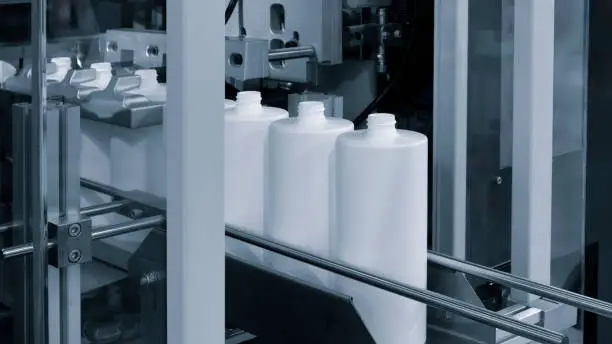
The introduction of pneumatic automation to your packaging line is not only about modernization, but it is a direct approach to enhancing your financial performance. The advantages are practical and directly respond to the fundamental issues of any production manager or business owner. This is the way pneumatics can save you money and increase profits.
- Higher Throughput: Pneumatic actuators are very fast. They can do high-speed repetitive jobs and this means that you can produce a lot more units per hour. The more products off the line, the more revenue.
- Less Product Waste and Rejects: Accuracy of pneumatic control reduces errors. Incorrect filling, spoilage caused by improper seals, and broken packages caused by careless handling are all minimized significantly. Any product that is rejected is a waste of material, labor and time; pneumatics safeguards that investment.
- Reduced Labor Costs: Automation will enable you to redirect your human resources out of repetitive, tedious work to more productive activities such as quality control, machine maintenance, and process improvement. A single operator is able to manage an automated line that substitutes the manual work of multiple.
- Low Maintenance and High Reliability: Pneumatic parts are reputed to be durable. They are engineered to have fewer moving components than more complicated mechanical or robotic systems and can run millions of cycles with little maintenance. This implies that there is reduced downtime in repair and increased uptime in production.
Future-Proofing Your Line: Trends in Packaging Automation
Packaging is not a stagnant world. The industry is constantly being pressured to change due to consumer demands and global pressures. The future is being influenced by two key trends: sustainability and customization. Manufacturers require agile automation systems.
The sustainability drive is causing the adoption of new, lighter, and even more delicate primary and secondary packaging materials. A pneumatic system, whose pressure and force can be easily adjusted, can be adjusted to work with these new materials without damaging it, which may need a complete redesign of a rigid mechanical system.
Moreover, since consumers are increasingly demanding more product variety and custom packaging, manufacturers must operate smaller batches and switch over their lines more often. This changeover process is easier and quicker due to the simplicity and modularity of pneumatic systems. It is much easier to change the stroke of a cylinder or replace a gripper than it is to rewrite the program of a whole robotic arm, and your production line will be able to be flexible enough to meet these unique needs and keep up with the competition. A strong pneumatic foundation is key to creating the best packaging solutions and choosing the right packaging technology for tomorrow’s challenges.
Start Your Automation Journey with the Right Partner
We began by establishing that primary packaging is not just a container but a core element of your product and brand. Understanding the main types of packaging, their functions, packaging materials, and processes is the essential first step. The second, more transformative step is recognizing that optimizing this process through automationis one of the most direct routes to a healthier bottom line.
By leveraging the speed, precision, and power of pneumatic components, you can directly address the critical points of your packaging line—from pick and place to filling and sealing—turning them into centers of efficiency. The result is less waste, higher throughput, lower costs, and ultimately, greater profitability.
Making the leap to automation can seem daunting, but it doesn’t have to be. As a producer of professional-grade automation parts, we specialize in providing the reliable pneumatic cylinders, valves, and grippers that form the backbone of modern packaging lines. If you’re ready to explore how to reduce costs and boost profits through intelligent automation, we can help you find the right packaging solutions. We invite you to browse our product catalog or contact our team of experts. Let’s build a more efficient future, one perfectly packaged finished product at a time.

